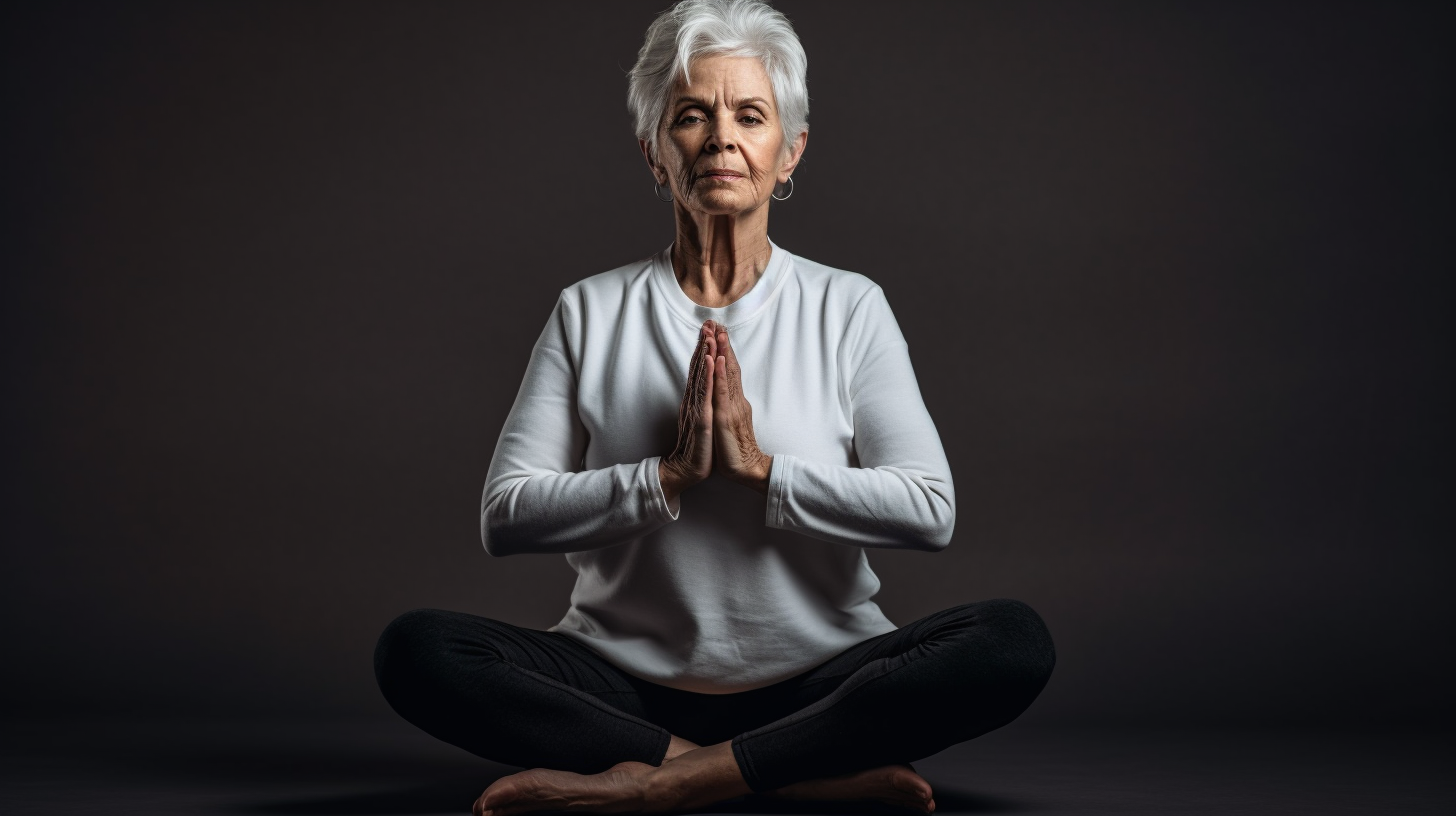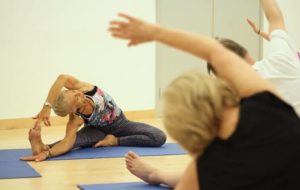As an Amazon Associate I earn from qualifying purchases.

Yoga offers numerous benefits for women over 50, both physically and mentally. Here are some key advantages of practicing yoga at this stage of life:
- Flexibility and Joint Health: Regular yoga practice helps improve flexibility, which becomes especially important as we age. Yoga poses gently stretch and strengthen muscles, tendons, and ligaments, reducing stiffness and promoting joint health.
- Strength and Balance: As women age, maintaining muscle strength and balance becomes crucial for overall health and injury prevention. Yoga poses focus on building strength in various muscle groups, including the core, legs, and arms, which helps support the body’s structure and improves balance.
- Bone Health: Postmenopausal women are at a higher risk of osteoporosis, a condition characterized by reduced bone density. Weight-bearing yoga poses, such as standing poses and arm balances, can help strengthen bones and minimize the risk of fractures.
- Stress Relief: Life transitions, hormonal changes, and various responsibilities can contribute to increased stress levels in women over 50. Yoga incorporates breathing exercises and meditation, promoting relaxation and reducing stress. Regular practice can lead to improved mental well-being and a better ability to cope with daily challenges.
- Mood Enhancement and Emotional Well-being: Yoga practice stimulates the release of endorphins, which are natural mood-enhancing chemicals in the brain. It can help reduce symptoms of anxiety, depression, and mood swings, leading to improved emotional well-being.
- Cardiovascular Health: Yoga can positively impact cardiovascular health by reducing blood pressure, improving circulation, and promoting a healthy heart rate. Practices like dynamic flow sequences or power yoga can provide a more vigorous cardiovascular workout.
- Body Awareness and Mindfulness: Yoga encourages a mind-body connection through conscious movement and breath awareness. Women over 50 can benefit from increased body awareness, which helps prevent injuries and enhances overall physical well-being.
- Weight Management: Regular yoga practice, combined with a balanced diet, can aid in weight management by boosting metabolism, improving digestion, and building lean muscle mass. It can also promote healthy eating habits and mindful eating.
- Improved Sleep: Many women over 50 experience sleep disturbances or insomnia. Incorporating yoga into your routine can help regulate the sleep cycle, promote relaxation, and improve the quality of sleep.
- Community and Social Interaction: Participating in yoga classes or joining yoga communities provides an opportunity for women over 50 to connect with like-minded individuals, fostering a sense of community and support.
Before starting a yoga practice, it’s essential to consult with a healthcare professional, particularly if you have any pre-existing medical conditions. Additionally, finding a qualified yoga instructor who can guide you through appropriate modifications and adjustments for your age group is beneficial to ensure a safe and effective practice.
What are the different forms of yoga that women over 50 should consider
Women over 50 can consider various forms of yoga based on their individual preferences, fitness level, and specific goals. Here are some popular forms of yoga that are generally well-suited for women in this age group:
- Hatha Yoga: Hatha yoga is a gentle and slower-paced form of yoga that focuses on physical postures (asanas), breathing techniques (pranayama), and relaxation. It is suitable for beginners and emphasizes proper alignment, flexibility, and balance.
- Restorative Yoga: Restorative yoga is a deeply relaxing and nurturing practice that uses props like bolsters, blankets, and blocks to support the body in passive poses. This form of yoga promotes relaxation, stress reduction, and healing. It can be particularly beneficial for women experiencing fatigue or dealing with chronic health conditions.
- Yin Yoga: Yin yoga involves holding passive poses for an extended period, typically three to five minutes or longer. It targets the connective tissues, joints, and deep fascial networks in the body. Yin yoga helps improve flexibility, increases circulation, and enhances joint mobility.
- Chair Yoga: Chair yoga is a modified form of yoga that can be practiced while seated on a chair or using a chair for support. It is suitable for individuals with limited mobility or those who prefer a gentler practice. Chair yoga helps improve strength, flexibility, and balance while promoting circulation and relaxation.
- Gentle Yoga: Gentle yoga classes are designed for individuals looking for a slower and more accessible practice. These classes typically include modified poses, gentle stretches, and breathing exercises. Gentle yoga is ideal for beginners or those who prefer a less physically demanding practice.
- Iyengar Yoga: Iyengar yoga is a precise and alignment-focused practice that uses props to support proper alignment in each pose. It emphasizes strength, stability, and balance. This form of yoga can be beneficial for women over 50 who want to improve posture, build strength, and develop body awareness.
- Vinyasa Flow Yoga: Vinyasa flow yoga involves linking breath with movement, creating a fluid and dynamic practice. It can vary in intensity, with options for gentle or more vigorous flows. Vinyasa flow helps improve strength, cardiovascular health, and flexibility. It is suitable for women who enjoy a more active and energetic practice.
- Kundalini Yoga: Kundalini yoga combines physical postures, breathing techniques, mantra chanting, meditation, and spiritual practices. It aims to awaken and channel energy throughout the body. Kundalini yoga can be beneficial for women over 50 seeking a holistic practice that integrates physical, mental, and spiritual well-being.
It’s important to listen to your body and choose a form of yoga that feels comfortable and enjoyable for you. It may be helpful to try different styles and attend classes led by experienced instructors who can provide guidance and modifications based on your needs and limitations.
Amazon and the Amazon logo are trademarks of Amazon.com, Inc, or its affiliates.









